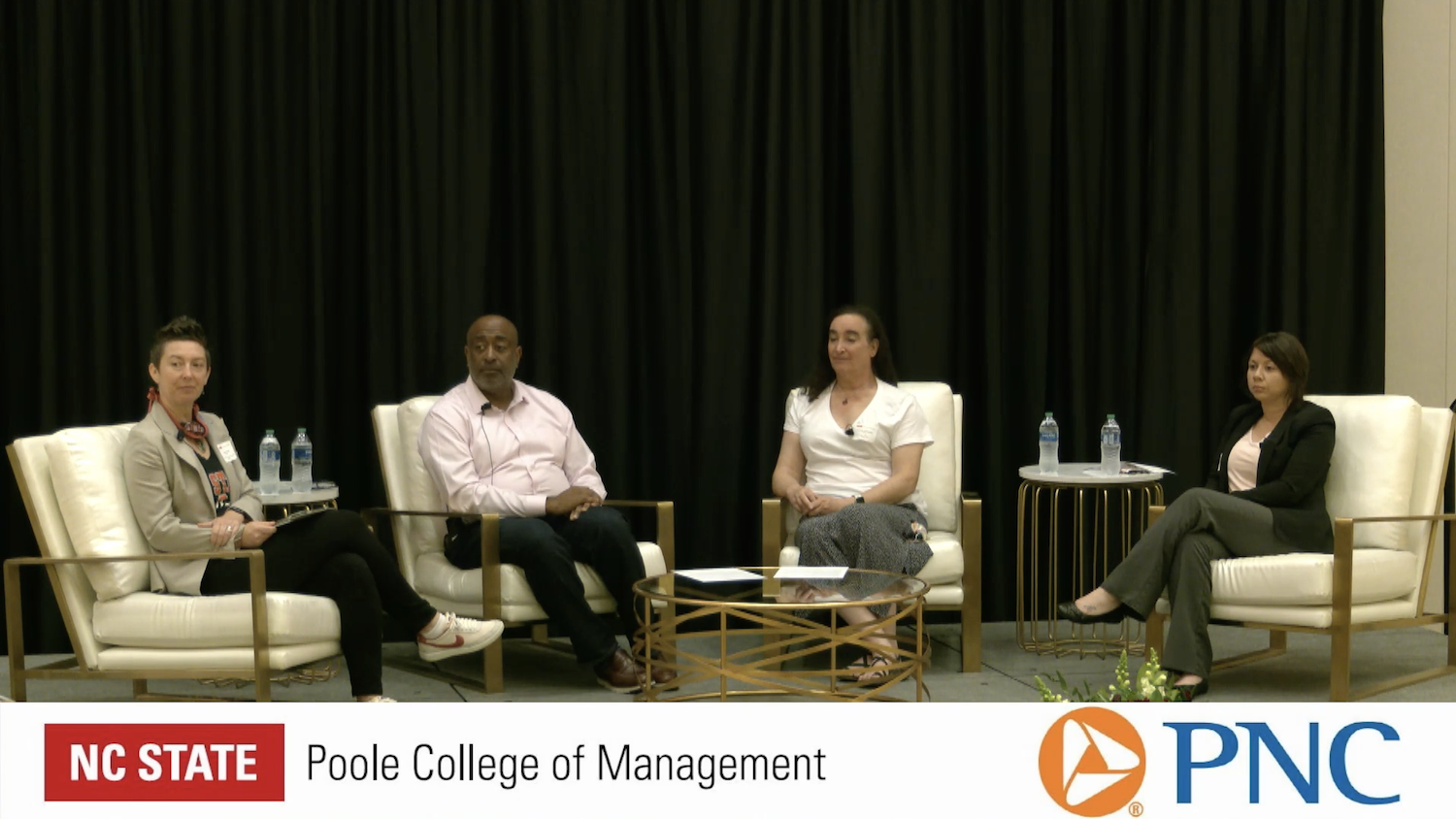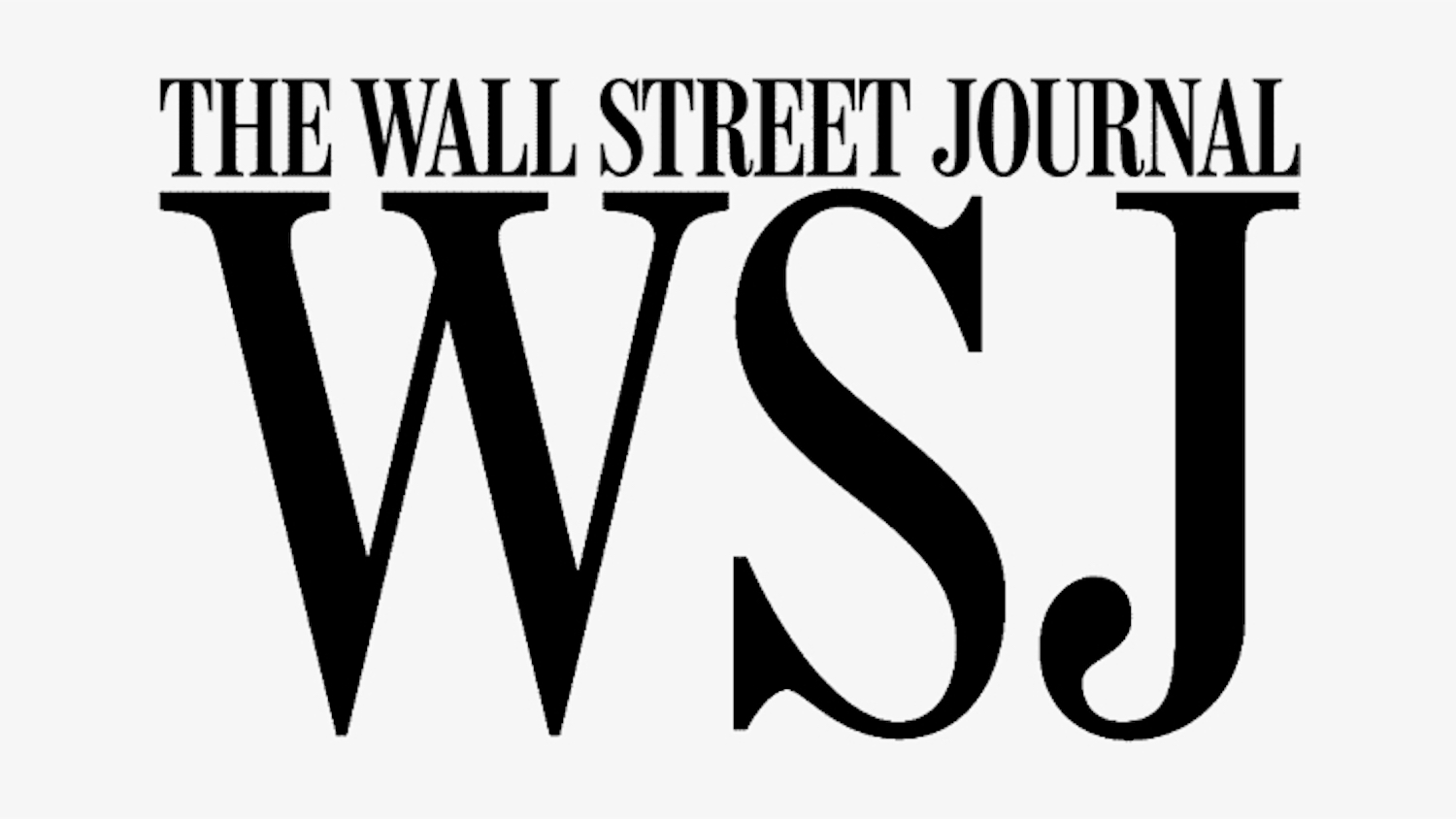Diversity, Equity & Inclusion: In It for the Long Haul
PNC Thought Leadership Series panelists break down why long-term planning for diversity, equity and inclusion is vital in today’s environment.
NC State Poole College of Management hosted the first hybrid in-person/virtual installment of the PNC Thought Leadership Series on Wednesday, Oct. 13, with a focus on emerging diversity, equity and inclusion (DEI) practices and how industry leaders are promoting these values in 2021. Tayah Butler, Poole College of Management’s director of diversity, equity and inclusion, led the discussion with a panel of DEI experts, including:
Joanna Schwartz, Professor of Marketing, Georgia College
Joanna Schwartz (she/her) is a full professor of marketing in her seventeenth year at Georgia College. She is a Georgia Governor’s teaching fellow and a speaker, researcher and consultant on issues related to LGBTQIA+ marketing and inclusion. She primarily teaches consumer behavior, principles of marketing and a diversity-focused course she created on LGBTQ+ marketing. She is a faculty lead for the GC Diversity Faculty Peer Educator group. She worked for nine years with Cox Broadcasting, first as the vice president for research for its wholly-owned marketing research subsidiary, and then later as the director of perceptual research for Cox Radio. Her doctoral and master’s degrees are from Georgia Tech and she has a psychology undergraduate degree from the University of Georgia. She started her career as a photojournalist and was nominated by Knight-Ridder for a Pulitzer in Spot News Photography. Her music photography of R.E.M., U2, The Police, Madonna and many other artists has been published in multiple outlets, including on concert posters and materials for Lou Reed and recently on R.E.M.’s social media pages. She’s a runner, is married, has two remarkable children, is trans, has a detailed knowledge of classic movies and takes food very seriously.
Donald Thompson, CEO, The Diversity Movement
With two decades of experience growing and leading firms, Donald Thompson is a thought leader on goal achievement, influencing company culture and driving exponential growth. As an entrepreneur, Donald has led multiple companies which have attained successful exits with strong returns for shareholders and employees. As the CEO of The Diversity Movement and Certified Diversity Executive, he is a champion of DEI initiatives. Through his work, Donald actively raises both awareness of and commitment to diversity, equity, and inclusion in order to create a more inclusive society and improve business outcomes along the way.
Donald previously led the multi-award-winning digital marketing firm Walk West, which was recognized by Inc. Magazine as one of the fastest-growing private companies in the U.S. throughout his tenure as CEO in 2018, 2019, and 2020. In 2021, he was named one of “Forbes’ Next 1000: Upstart Entrepreneurs Redefining the American Dream.”
Melissa Faircloth, Director, NC State Multicultural Student Affairs Office
Originally from North Carolina, Melissa is a member of the Coharie Tribe and earned her undergraduate and master’s degrees from East Carolina University where she also worked in academic advising.
In Melissa’s most recent role, she served as the inaugural director for the American Indian and Indigenous Community Center at Virginia Tech. In her role on the Blacksburg campus, she planned and coordinated programs and events which affirmed and celebrated Indigenous identity while also advancing campus awareness around issues impacting Indian Country. During her time there, Melissa was a co-founder of the institution’s first intertribal powwow and supported students in their efforts to introduce an Indigenous Peoples’ Day Resolution. Alongside committed faculty and tribal leaders, she also participated in outreach initiatives with the eleven tribes within the Commonwealth.
Melissa is currently finishing a doctorate in sociology from Virginia Tech. Her dissertation research examines the intersection of Native student experience at predominately white institutions and the role which cultural centers play in their retention. Her work also examines the pervasiveness of invisibility and erasure myth and considers how these factors impact physical spatial negotiations on campuses.
Adopting the right DEI practices has been daunting for many institutions and organizations, as expectations for these practices continue to shift from quantitative representation to policy structure changes.
Key Insights
1. Improve structure of DEI positions.
Following the events of 2020, many companies are creating and looking to fill DEI positions. Among the challenges some encounter is the reality that they have never hired for such a position, making it difficult to create a job description. Donald Thompson explained why expert guidance from consultancies with a business transformation lens, such as The Diversity Movement, can be beneficial to help establish goals for DEI roles and hiring supervisors – and to examine an organization’s overall culture that will set the tone for a DEI executive’s experience.
“If you are going to hire a chief diversity officer, you need to look at what you are doing to set the business environment so that person can actually succeed,” said Thompson. “What is encouraging to see is that people are making genuine attempts.”
2. More data. Better data. Different data.
Research is crucial for understanding the demographics and makeup of an organization or institution and those they serve, said Joanna Schwartz. “Many institutions might know the percentages of ethnicities, gender and race but do not know identifying LGBTQIA student populations,” she said.
Keeping data anonymous during the data collection process is key to getting accurate responses from employees and students.
3. Be intentional about DEI with students and talent pipeline.
“Everything we [institutions] do creates a message,” said Schwartz. “If we’re training people to be leaders in business, they’re at a disadvantage if they can’t walk into a corporation and already know how to treat people equitably…One of our tasks as colleges and professors is to get people up to speed on what is going to be expected when they get to the workplace.”
New talent wants to see representation and the use of appropriate DEI language during the recruitment process. An organization’s failure or shortcomings on this front can result in a candidate’s rejection of a job offer during an age when prospective employees are willing to walk away from companies and opportunities that don’t align with their values.
On the hiring side, Melissa Faircloth explained that recruiters are looking for talent who can communicate and collaborate across difference. On the candidate side, the generation now entering the workforce cares deeply about the climate in which they’re working – regardless of their own representation status, she said.
4. Look beyond a statement.
For those entering the job market or investors trying to assess an organization’s commitment to DEI, the biggest tell of how an organization is applying DEI methods is by asking what the CEO is actively doing relative to DEI work. According to Thompson, putting out a diversity statement is a baby step. Other indicators include executive sponsorship of Employee Resource Groups and DEI training for executive leadership on a regular basis.
Schwartz and Faircloth mentioned that looking for diverse representation at the top of the organization indicates whether or not certain groups are given the opportunity to advance.
5. Broaden your reach.
Universities looking to recruit from graduating high school classes recognize the need to broaden their reach when marketing their brands and programs to reach certain populations.
“Do not just attempt to understand the identities, but the decision-making process in those
communities,” said Faircloth. “In addition to building relationships with prospective students, it’s important to build relationships with their communities.”
Parents also should be acknowledged as stakeholders in the decision-making process, as they conduct their own research and heavily influence their children’s school selections. Tactical methods for reaching prospective students include setting up tables at pride parades and other diversity events, as well as visiting schools with diverse student populations.
- Categories:



